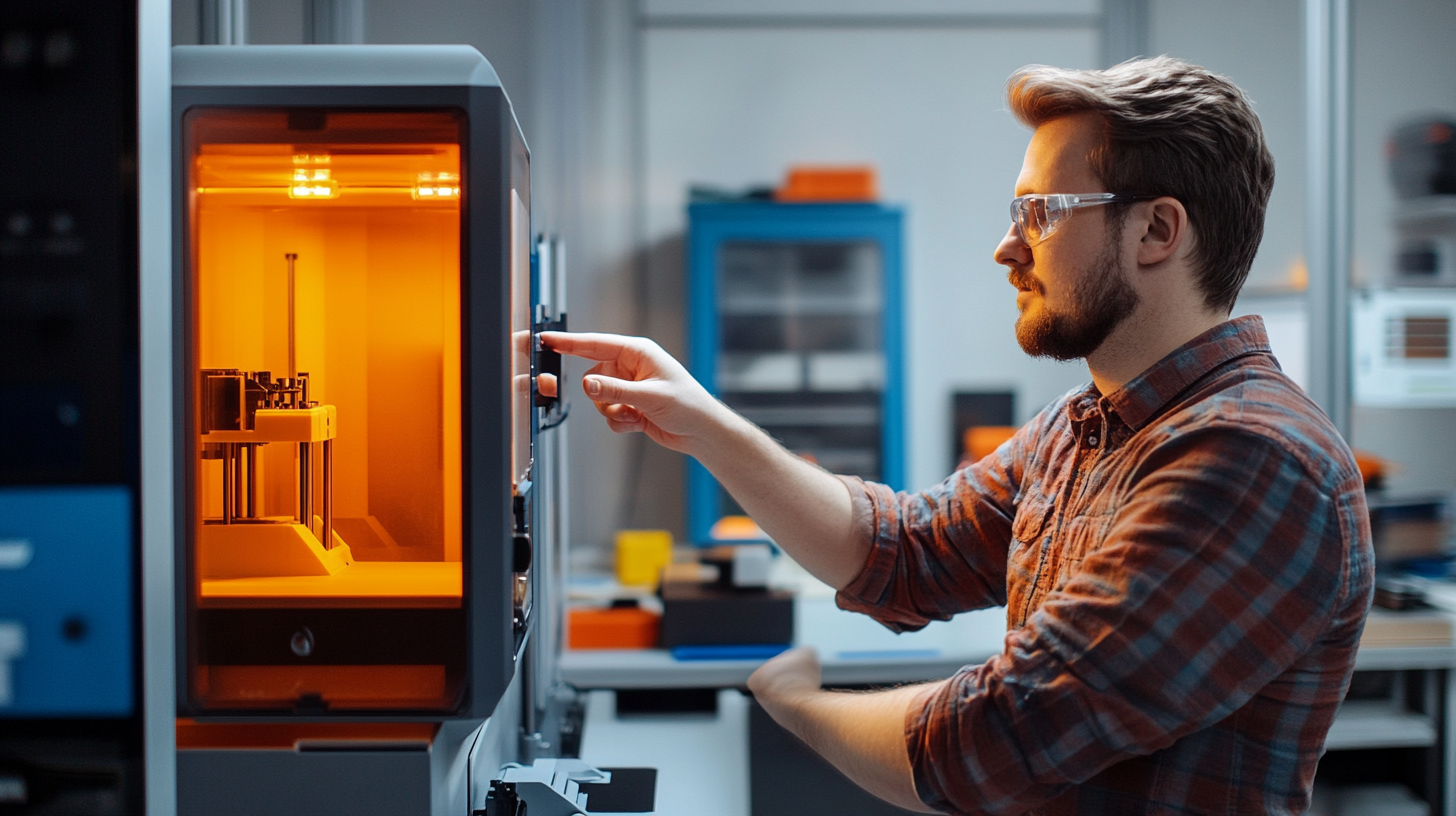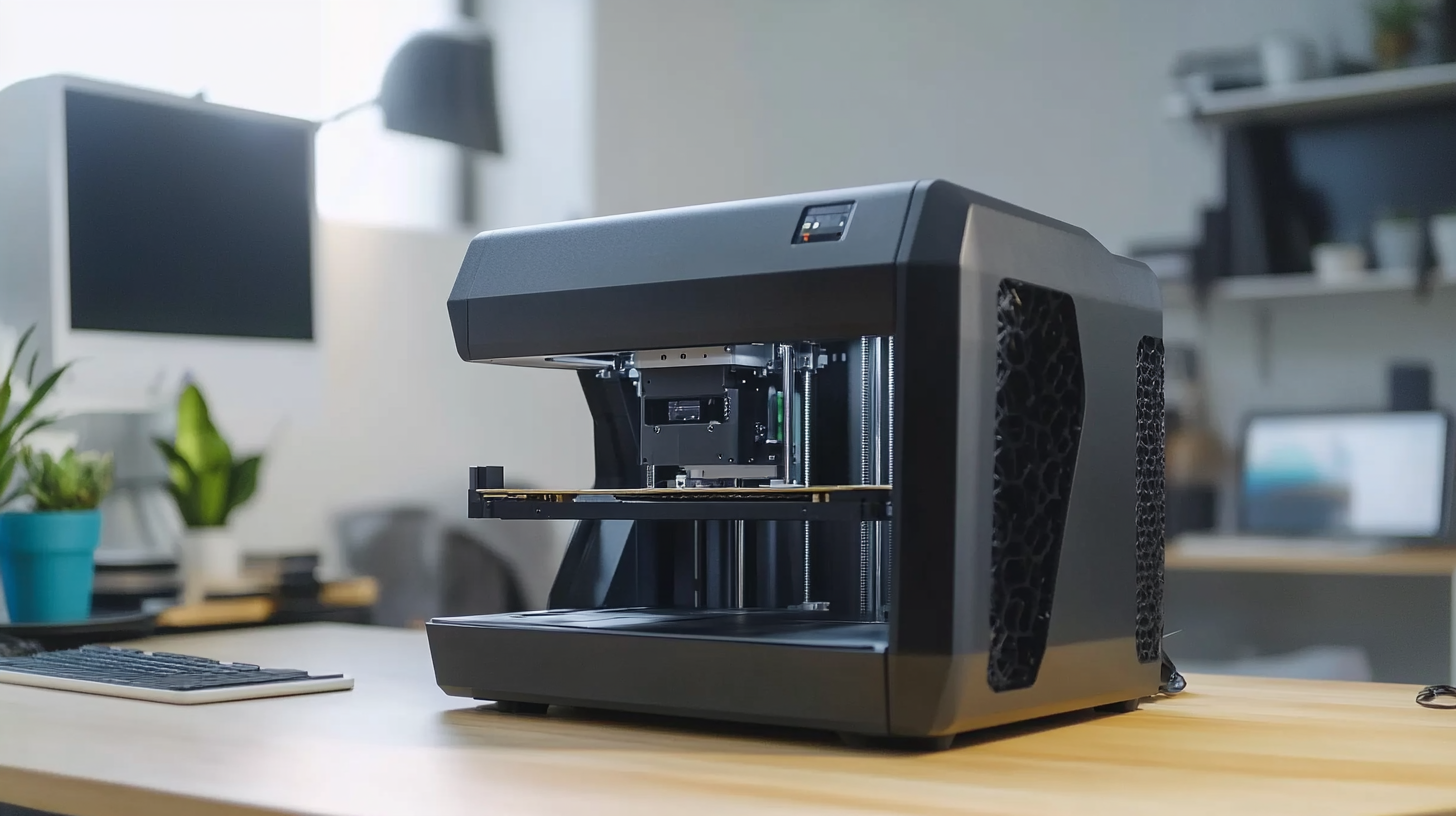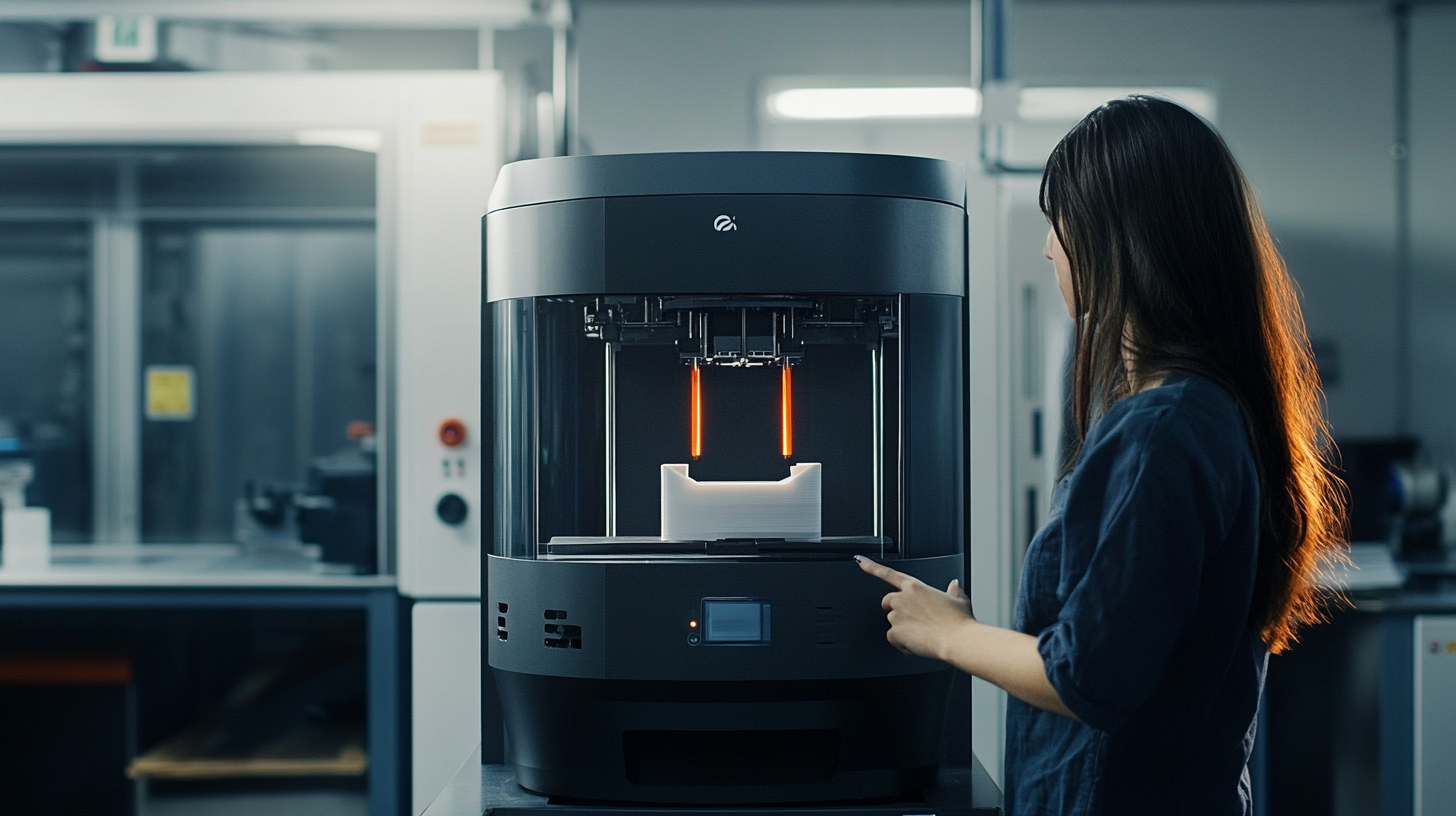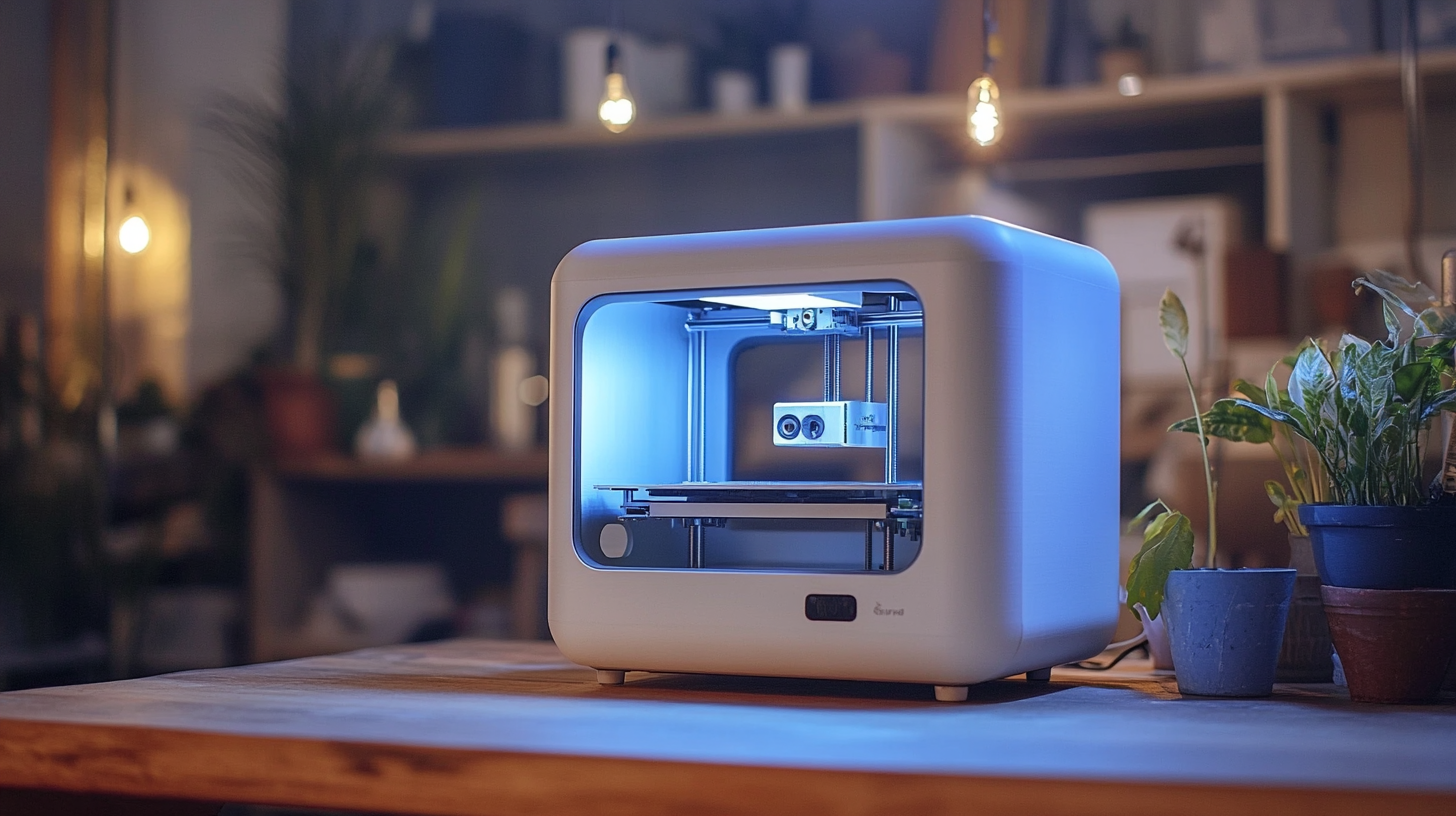How to Choose the Right Professional 3D Printer for Your Business Needs
As businesses continue to explore innovative solutions to enhance their production capabilities, the demand for advanced technologies like a professional 3D printer has surged. These machines offer unparalleled versatility, allowing companies across various sectors to create prototypes, customized products, and intricate designs with remarkable precision. However, the plethora of options available in the market can make choosing the right professional 3D printer a daunting task. Understanding the specific needs of your business is crucial, as the right printer can significantly impact efficiency, cost-effectiveness, and overall productivity.
In this blog, we will guide you through the essential considerations and factors to evaluate when selecting a professional 3D printer tailored to your business requirements. From assessing the materials you wish to print with to understanding the technology that best fits your projects, this comprehensive overview will empower you to make an informed decision. Whether you are a startup seeking to make prototypes or an established company looking to integrate 3D printing into your production lines, finding the perfect professional 3D printer is a pivotal step toward achieving your business goals.

Identifying Your Business Requirements for 3D Printing Solutions
When it comes to selecting a professional 3D printer for your business, the first step is to clearly identify your specific requirements. Assessing your business's production needs involves considering factors such as the types of materials you need to print, the scale of your projects, and the level of detail required for your prototypes or final products. For instance, if you are in the engineering sector and require high-precision components, then a printer capable of using industrial-grade materials and producing intricate designs is essential. Another crucial aspect to consider is the volume of production. If your business anticipates high demand for parts or products, choosing a 3D printer that offers faster print speeds and large build volumes will be beneficial. Conversely, if your focus is on creating custom, small-batch items, you might prioritize printers with versatility and advanced features that allow for intricate customizations. Additionally, factoring in your budget and operational costs, such as maintenance and the price of materials, will guide you toward the best fit for your financial planning. Lastly, consider the user-friendliness and support offered by the manufacturer. Depending on your team's expertise level, investing in a printer that offers intuitive software and robust customer support can streamline your production process. Taking the time to evaluate these aspects will ensure that the 3D printing solution you choose aligns perfectly with your business objectives and workflow.

Key Features to Look for in Professional 3D Printers
When selecting a professional 3D printer for your business, it’s crucial to focus on key features that align with your operational requirements. One of the primary aspects to consider is print resolution. According to a report by Wohlers Associates, the average layer height for professional-grade printers can range from 20 microns to 300 microns. This granularity affects the smoothness and detail of the final product, making it essential to choose a printer that meets your precision needs for prototyping or production.
Another important feature is the build volume. Many businesses require printers with larger build capacities to create sizable prototypes or multiple parts in one go. A study by MarketsandMarkets indicates that the demand for larger build volumes has increased by 25% over the last three years. Therefore, evaluating the printer's specifications to ensure it can accommodate your largest expected print is vital for efficiency and cost-effectiveness.
Material compatibility is also a key consideration. Professional 3D printers should support a variety of materials, including thermoplastics, composites, and metals. A recent article from 3D Printing Industry highlighted that nearly 60% of businesses seek printers capable of versatile material usage to innovate their product lines. This adaptability can significantly enhance your business's capabilities and responsiveness to market demands.
Lastly, user interface and software integration are critical to streamlining your design-to-manufacturing workflow. A report from Gartner emphasized that intuitive software can enhance productivity by up to 30%, minimizing the learning curve and maximizing your team’s output. Thus, ensuring that the printer you select offers robust software support can lead to smoother operations and better-designed products.

Understanding Different 3D Printing Technologies and Their Applications
When it comes to selecting the right professional 3D printer, understanding the various 3D printing technologies available is crucial. Each technology offers unique benefits and applications that can significantly impact your business operations. According to a report by SmarTech Analysis, the global 3D printing market is expected to grow to $41 billion by 2027, with metal and polymer printing technologies leading the charge.
Fused Deposition Modeling (FDM) is one of the most commonly used 3D printing technologies, favored for its affordability and versatility. FDM printers extrude thermoplastic materials to create sturdy, functional parts suitable for prototyping and end-use applications. This technology accounts for over 60% of the 3D printing market due to its accessibility and ease of use, making it an excellent choice for businesses looking to integrate 3D printing into their workflows.
In contrast, Stereolithography (SLA), which utilizes a UV laser to cure liquid resin into solid forms, offers exceptional precision and surface finish, making it ideal for industries like dental and jewelry. Research from Wohlers Associates indicates that SLA and other resin-based technologies are expected to grow significantly, as their accuracy and detail make them suitable for complex designs that require high fidelity. With the right understanding of these technologies, businesses can choose a 3D printing solution that not only meets their production needs but also enhances their competitive edge.

Evaluating Cost vs. Performance for Your Budget
When selecting a professional 3D printer for your business, evaluating cost versus performance is crucial. The initial investment in a 3D printer can be significant, but it’s the long-term performance and efficiency that really determines its value. Start by identifying your specific business requirements—what materials you intend to use and the complexity of the designs you need to produce. This will help narrow down your options and focus on printers that offer the best balance of performance relative to their costs.
Consider the total cost of ownership when comparing models. This includes not only the purchase price but also recurring expenses such as maintenance, materials, and energy consumption. Some high-performance printers may come with a higher upfront cost but can significantly reduce material waste and downtime, leading to savings over time. Additionally, examine the print speed and quality. A printer that functions at a lower cost but delivers subpar results can ultimately erode your profit margins due to reprints and delays.
Lastly, don’t overlook the support and warranty offered by the manufacturer. Reliable customer service can save you money in troubleshooting and repairs, ensuring that your operations remain uninterrupted. By focusing on these aspects of cost versus performance, you can make an informed choice that aligns with your business needs and budget, ensuring a more profitable investment in your 3D printing capabilities.
Future-Proofing Your Investment: Scalability and Upgradability Considerations
When considering the purchase of a professional 3D printer, businesses must prioritize scalability and upgradability to ensure they are making a future-proof investment. As technology continues to advance rapidly, it becomes imperative to select equipment that can adapt to evolving demands. A printer that allows for modular upgrades or has the capacity to integrate new technologies will enable businesses to align their capabilities with market changes without incurring the high costs of complete replacements.
Furthermore, aligning the choice of a 3D printer with a comprehensive strategy that balances innovation with practicality is vital. Companies are not just looking for the latest features; they need solutions that maximize resources while minimizing disruption. This means opting for systems that can seamlessly work in tandem with existing processes and systems, avoiding the pitfalls that come with legacy technology. A future-ready 3D printer will not only support current production needs but will also stand the test of time, accommodating new materials and methodologies as they emerge in the marketplace.
In addition, businesses should evaluate the long-term financial implications of their investment. Initially, a high-quality 3D printer may seem costly, but when viewed through the lens of scalability and potential operational efficiencies, the return on investment can be substantial. Organizations should seek to engage with providers that offer transparent upgrade pathways and robust support systems, ensuring that the printer remains relevant and effective as technology evolves. By focusing on these critical aspects, companies can position themselves to thrive in an increasingly competitive landscape.
